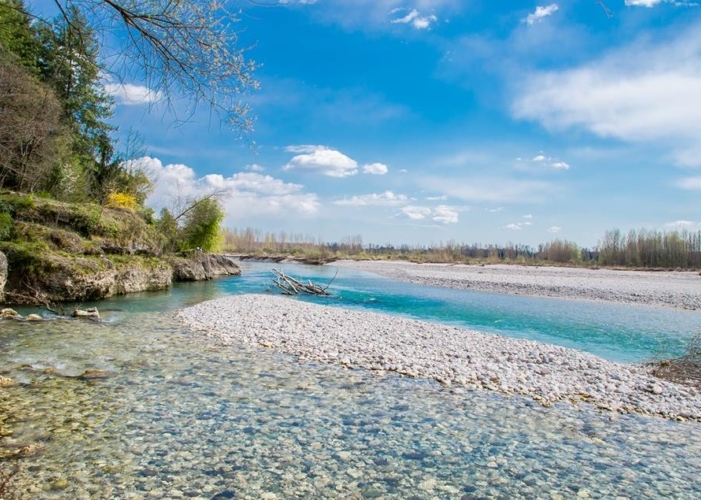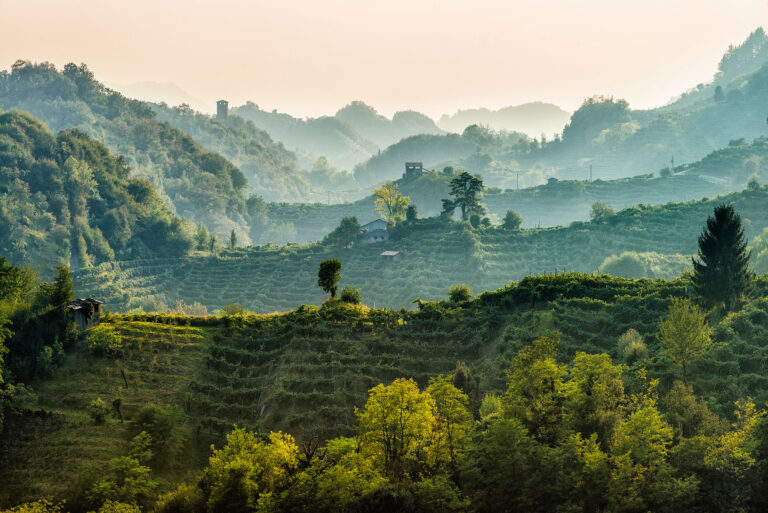Journey on the Piave: along the sacred river between history and nature
Journey on the Piave, from a fertile mother to a witness to war
Monuments and panoramas alternate in suggestion. That the commemorations of the centenary of the Great War are underway, even the most distracted have noticed. That in three years there will be those to remember the epilogue, more painful than victorious, is certain and necessary. What is perhaps less obvious is that the duty to celebrate the memory of those who preceded us can also become an opportune stimulus to safeguard the future. And there is no mention here of how remembering war is indispensable for building peace. But of that river that before that war was the mother (La Piave), and after too much blood which dyed its waters became the sacred river, since Gabriele D’Annunzio recognized it as “male power” in the resistance to the enemy . It certainly cannot be the will of a poet-soldier to change the nature of a river, what a generous and severe mother remains. With its oddities and its wonders. With its too thick bed drained not so much by its torrential character, as by agricultural and industrial production. With its fragile banks and its angry floods that seem to rebel against human blindness. But also with his suggestions and with the passions that he solicits, thanks to which much has been done to preserve enchanting glimpses.
The Isle of the Dead. An indelible toponym for about a hundred hectares between the northern side of Montello and the town of Moriago della Battaglia. The vanguards of the Italian army passed through here during the battle of Vittorio Veneto. And many of the famous boys of 1999 died there, at only nineteen, whose bodies were found here by the thousands, dragged by the current. A pyramid recalls them, built in the 1920s with the stones of the Piave, on the walls of which the verses of the “Prayer of Sernaglia” by D’Annunzio are engraved. In 1965 the then Monsignor Albino Luciani, future Pope, inaugurated the nearby church-sanctuary (“Madonnina dei Caduti del Piave”) and in the square dedicated to the boys of ’99 you can also admire three stone monuments by the sculptor Marbal: delicious the its botanical-sculpture garden in nearby Fontigo. But, in addition to the monuments and relics (and a well-equipped recreational area) in this village which – before 1918 was called “Green Island” – you can visit a real oasis which in addition to memory offers thematic itineraries, with a small lake fed by a spring that creates an ideal habitat for aquatic birds and water flora and a botanical garden that collects and illustrates all the varieties of plants present in the area. And then there is him (or her): the Piave, with its desolate shore, with its pebbles, silts and erosions, which here overlooks the Montello. Two well-marked paths lead up to Vidor on one side and the Fontane Bianche oasis on the other.
Vidor, between caves and river. The Island of the Dead is almost in the center of the “The Great War from bridge to bridge” route – that is on the 30 kilometers of the first Austro-Hungarian line between Piave and Montello – on which the commemorations have been able to turn on the spotlight, inducing the Municipalities interested to restore trenches, war artifacts and access to caves and naturalistic sites. The first bridge that gives the project its title is that of Vidor (the other is that of Ponte della Priula), a town from the center of which you can easily climb to Col Castello, with a small church that is a monument to the fallen: occasionally the entrance to some cave shelter for soldiers, indicated by descriptive signs. Or you can reach Col Marcon, characterized by observation points, from which the view ranges from the Vidor Bridge, destroyed several times by the floods of the river (and demolished in 1917 to prevent the Austrians from crossing the defensive line) up to Monte Grappa, in a gently austere landscape where the river often resurfaces. Nearby, but not open to visitors because it is private, there is also the fourteenth-century Benedictine Abbey of Santa Bona, severely damaged by the war, whose monks were very involved in the reclamation and hydraulic organization works that still “work” today, such as the Palù.
Three weird daredevils. From the Oasi delle Fontane Bianche you can easily reach the center of Falzè di Piave, completely rebuilt after the war that razed it to the ground and where the war memory has the appearance of the monument to the “Three Arditi assault” by Giovanni Possamai, 1921. It is precisely this date that makes it a monument with a totally different conception from the ideal of the period, with the almost frightened human traits of the three soldiers, so different from the fascist-inspired statues that give us imperturbable and gym-trained soldiers. Coming down from the square along the Pedrè stream on an easy path, you meet
no two bunker caves and enter the Le Volpere path, which adds evidence of Neolithic settlements to the naturalistic value, before arriving at the Fontane Bianche oasis.
The toponymy of a river that does not exist However, in the vicinity of the Piave bed, the process unfolds in a toponymy of heroism (Nervesa della Battaglia, Moriago della Battaglia, Sernaglia della Battaglia, Fagarè della Battaglia , Losson della Battaglia) and in an infinite number of references in the names of the streets named after commanders, generals, heroes, armies, battles. Not to mention the numerous shrines, monuments, war cemeteries. What is often not found when moving along the Piave is the river, a raw material for agricultural production and for electricity. But if it began to “produce tourism” in a meaningful way, perhaps it would be able to deserve a little more respect?
the morning fog on the VII ° hold of Montello with the bell tower of Sernaglia near the Island of the Dead.
There are numerous tracks and paths that dot the course of the Piave: proposals that intersect, touch each other. And who often ignore each other, thus complicating access to fascinating views and precious natural and historical sites.
Passo Barca – The beach overlooking the river. Today Passo Barca is one of the most crowded “beaches” in the summer period, from which interesting, well-marked paths branch off, which penetrate the floodplain areas of the river. From the thirteenth century to 1970 it was both the landing place for the ferry that connected the two banks of the Piave (quite close here) and also a real port particularly important for the Serenissima, when the timber trade was the main economic activity along the course of the Piave and here docked boats led by the Belluno raftsmen, to deliver them to the Treviso crews who took them to the mouth.
I Palù – Between wet meadows and ditches. The name suggests the ancient presence of a marshy area and, in fact, the Palù area between the municipalities of Sernaglia, Moriago, Vidor and Farra di Soligo, is “lower” than the surrounding areas. It is an area of wet meadows, ditches and perimeter plants, the result of the reclamation carried out by the Benedictine monks in the 13th century, which has maintained the characteristic “closed field” typology, now almost unique in Italy and Europe (comparable to “bocages” of France). To this value are added the geological wealth of the lake deposits and the archaeological wealth of Castelik di Sernaglia (Bronze Age), as well as a unique ecosystem.
Fontane Bianche – The springs in the naturalistic oasis. Not far from the provincial road, a small road that immediately becomes a dirt road leads to a wood in Fontane Bianche in an area characterized by springs. Here a naturalistic oasis has been established with an equipped and well illustrated path, in a dense vegetation crossed by transparent and particularly cool waters, with an almost constant temperature around 10 ° (at least for a certain stretch of the source) which generates a microclimate unique and, on the hottest days, a suggestive mist. The oasis is also connected to the area of the Island of the Dead by a path that runs along the river.
How to get there State 13 Pontebbana and then the Provinciale 34.
Between Treviso and Conegliano, leave the Statale 13 Pontebbana at Ponte della Priula, to take the Provinciale 34 towards Pieve di Soligo. After about 8 km, turn left towards the center of Falzè di Piave; another 8 km and you arrive in the center of Moriago, where you take via degli Arditi from which you reach the viale dell’Isola dei Morti and a large parking lot from which paths and streets with the names of the protagonists of the Italian offensive radiate. –




